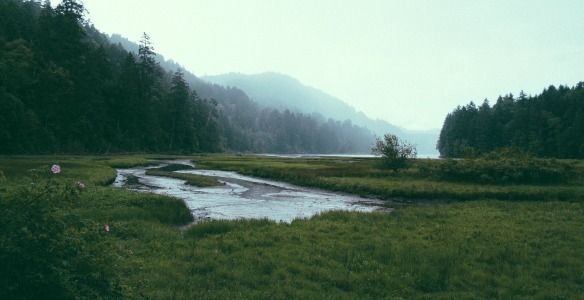
When embarking on a long-planned round the world boat trip, the last thing you want to forget is your paper or electronic nautical charts. Whilst these are without a doubt the most essential items of ocean navigation, they're equally appreciated by those who's maritime exploits keep them far from the coast. In this entry of the Seachest blog, we're going to give a brief summary on Riverway and Inland nautical charts, demonstrating how they service all UK vessels who literally live on the water by their instruction.
What is an 'Inland Waterway'?
For starters, let's actually look at what defines the nature of these waters. In the UK, inland waters are categorised by their depth and wave height, and are classified using letters from A-D. They can include canals, non-tidal rivers, tidal rivers, large, deep lakes & lochs, and estuaries, essentially separating them from any stetch of water that can be regarded as 'sea'. There's over 4000 miles worth of inland waterways in the UK alone, and vessels that travel them have vastly different construction and equipment standards to those on the ocean.

Charts
The worldwide navigation of Admiralty's 3,300+ charts are designed to provide berth-to-berth coverage of the world's busiest shipping routes, with great emphasis put on maps for deep sea, coastal passages and port approaches. Among this extraordinarily large range of maps, there are a variety of charts designed for those who want to explore the

rivers and inland passageways of their native or visited country. Whether it's the serene
River Tamar, Lynher and Tavy or separate sheets for the
Rivers Colne and Blackwater, you can find the same level of detail when itcomes to safety-related features and accurately measured depths. As we mentioned in our
Guide to Electronic Nautical Charts Software, all United Kingdom Hydrographic Office (UKHO) paper charts can also be accessed digitally via the Admiralty Raster Chart Service (ARCS).
Imray also have their own solution for inshore navigation via their C-series charts. Supplied at various scales, these river and a passage charts feature complete, up-to-date depths, with a coverage that spans beyond the UK to help one navigate their way through the inland waters of Europe.
Inland Waterway Pilot Guides
Aside from inland passage nautical charts, one of the most essential boatman's tools for navigating those inner watery tunnels are pilot guides. Showing broad and narrow canals, navigable rivers, non-navigable waterways, locks, tunnels and much more, these guides come from the likes of Imray, the Royal Yachting Association (RYA) and many of our other favourite publishers. Offering a more detailed set of instructions than charts, you can find everything from full pilotage details to the location of popular pubs in these fold-out guides, making them an indispensable navigation tool.
For traversing through inland waterways in Europe, there's also a series of pilot guides known as the Fluviacarte Guides (a set of inland waterway maps), the Guides Chagnon (canal guides) and the Editions du Breil (for French navigable waterways). All three are written in French, German and English, and are known for their exceptional precise cartography, well documented texts and details of all local facilities and features.
For all future blogs relating to nautical charts and the maritime industry as a whole, keep an eye on the Seachest Facebook page, Twitter and/or Google+.

